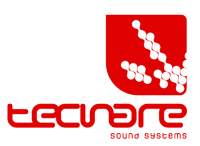Explore the World of Sound
Sound Propagation in Enclosed and Open Spaces
Sound propagation in different environments is a critical factor in the design and tuning of professional sound systems. In open spaces, sound behaves differently than in enclosed spaces due to the absence of significant reflections. Indoors, reflections, absorption, and reverberation influence audio perception. This article explores these concepts and their application in optimizing sound systems.
Sound Propagation
1. Sound Attenuation in Air
In an obstacle-free environment, sound attenuates due to spherical dispersion and air absorption. The loss of sound pressure level (SPL) with distance in a free space is calculated using the inverse square law equation:
Where:
- SPLd is the sound pressure level at a distance dd.
- SPLr is the sound pressure level at the reference distance rr (typically 1 meter).
- d is the measured distance.
- r is the reference distance.
2. Sound Reflection and Absorption
When sound interacts with surfaces in an enclosed space, part of the energy is reflected while another part is absorbed. The absorption coefficient (α\alpha) of a material is defined as:
Where:
- Eabsorbed is the energy absorbed by the surface.
- Eincident is the total energy of the sound wave before impacting the surface.
Materials with α\alpha close to 1 absorb almost all the energy (e.g., carpets, acoustic panels), while those with a low α\alpha reflect most of the sound (e.g., concrete, glass).
3. Reverberation in Enclosed Spaces
Reverberation results from multiple sound reflections within a space. The reverberation time (T60) is the time it takes for sound to decrease by 60 dB after the source stops and is calculated using Sabine’s formula:
Where:
- V is the volume of the room in cubic meters.
- A is the total absorption area of the room in square meters.
Excessive reverberation affects sound intelligibility, while too little reverberation reduces the perception of naturalness.
4. Sound Diffraction and Dispersion
Diffraction occurs when a sound wave encounters an obstacle and bends around it. Diffraction depends on the wavelength (λ) and the size of the obstacle (D). If λ is greater than D, the sound will wrap around the object without significant attenuation.
Dispersion occurs when sound interacts with irregular surfaces, spreading in multiple directions. It is used in acoustics to improve diffusion in auditoriums and recording studios.
5. Delay Calculation in Sound Systems
When multiple sound sources are used in a reinforcement system, delays must be applied to synchronize sound arrival. The delay (t) is calculated as:
Where:
- d is the difference in distance between the primary and secondary source.
- v is the speed of sound in air (approximately 343 m/s at 20°C).
This adjustment is crucial in delay towers and front-fills to maintain sound coherence throughout the venue.
Application in Sound System Design
- In outdoor environments, the inverse square law is critical for calculating the appropriate coverage of a sound system.
- Indoors, selecting absorption materials and managing reverberation time are essential to avoid intelligibility issues.
- In large venues, proper implementation of delays and sound dispersion improves coverage uniformity.
Conclusion
Understanding sound propagation in different environments allows for the precise design and optimization of sound systems. Through proper calculations of attenuation, reverberation, and delays, a clear and uniform listening experience can be ensured.
Explore Other Topics
Acoustic Science
Audio Technology
Sound Design
Music Production
Environmental Acoustics
Psychoacoustics
Audio Engineering
Sound History
Featured Articles
Tecnare
Loudspeakers Series
E Series
IBZA Series
V Series
ALIS Series
Array Series
SW Series
KT Series
TANIT Series
CS Series
Amplifiers Series
Digital Processors
Accessories




